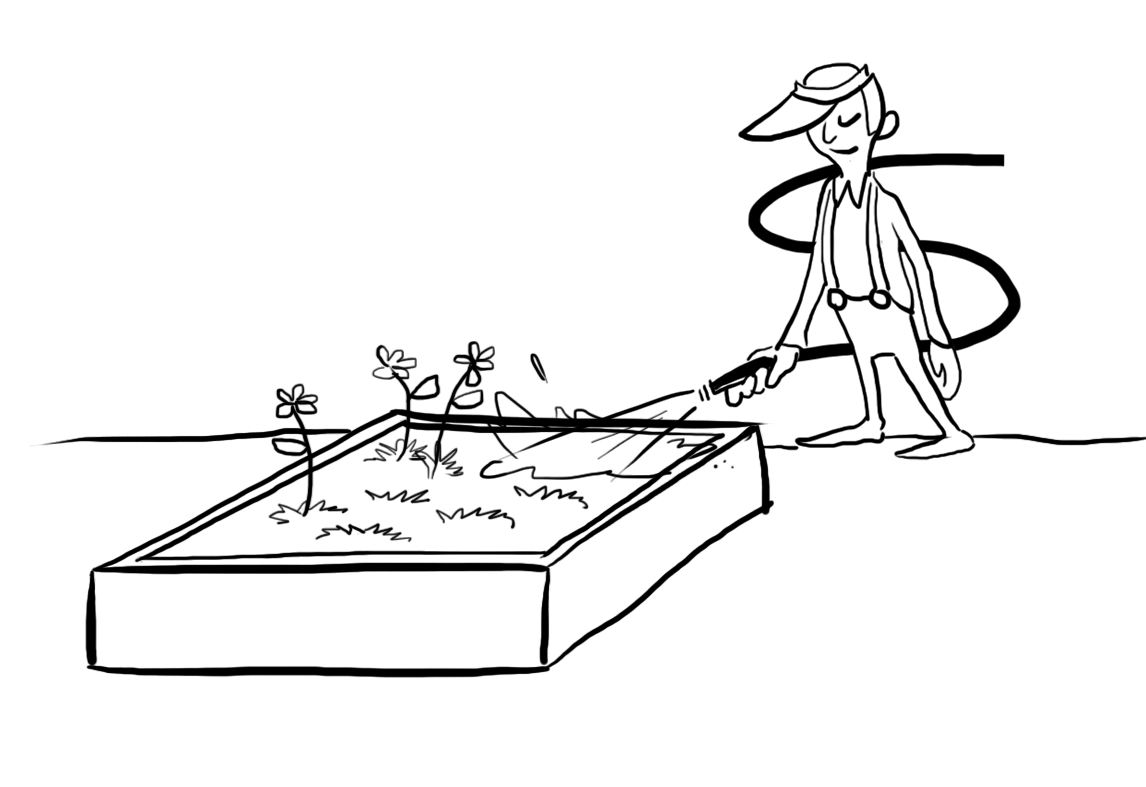Making it Fun
One of the most common reasons to start a garden in a schoolyard is the educational value, and of course the best way to learn is by doing! When kids are involved in the cultivation and maintenance of a garden, the many hands can make much lighter work outside of class time. Try involving them from start to finish: building the garden structure, planting the seeds, watering, weeding, protecting, staking, harvesting, and more.
Irrigation and Fertilization
Depending on what you’re growing and your local climate, irrigation may be required to keep your crops hydrated. If the garden is quite small, it can be watered with a simple watering can. A drip irrigation system or a soaker hose can cover a larger area and make irrigation a breeze. Keep in mind that these systems save a lot of water compared to traditional sprinklers.
Mulching can make your garden even more water-efficient by holding in moisture, which means the garden requires less irrigation. Mulching also has the benefit of blocking out bare soil where weeds can grow.
Fertilizing may or may not be required, depending on the quality of the soil in your garden. If the soil lacks nutrients, a fertilizer can help the plants grow better. You have the choice of chemical fertilizers or organic fertilizers. Chemical fertilizers are synthetically manufactured and require a lot of energy to produce, typically from fossil fuels. Organic fertilizers can come in the form of compost, manure, blood meal, fish emulsion, granite dust, and rock phosphate, all of which come from natural sources.
Weeding, Grooming, and Support
Weeds will inevitably find their way into any garden, and they will compete with other plants for water, nutrients, and sunlight. Regular weeding helps garden plants to maximize their growth. If you compost weeds, make sure they’re thoroughly broken down before using the compost or they may re-seed wherever they’re placed next. Avoid dumping weeds into forested and other natural areas. Many weeds are invasive introduced species and are incredibly tenacious. Many invasive species become established in new areas from garden scraps.
Some productive crops require some pruning to maximize their yields. For example, young apple trees need to be pruned for the first few years to build a strong branching structure. Some crops do best when planted heavily and then thinned out by removing all but the strongest plants. Some species, for example tomatoes, require a support structure so they don’t flop over. Every plant has unique needs; for best results it is wise to familiarize yourself with care instructions. If in doubt, ask an expert.
Protection
Despite your best experts, there may be other forces at work that can harm your garden. Keep a close eye on foliage for any signs of insect damage; the sooner you can address a pest problem, the better the outcome will be. There are several mild and natural alternatives to traditional pesticides, including beneficial insects that hunt pests, home-made remedies, traps, and barriers.
Physical barriers are the most effective method against larger pests like rabbits, gophers, and deer. You may need a fence around your garden or fruit trees, or to cover beds with chicken wire or other similar barriers.
Passing It On
You’ve made the effort and created a beautiful and productive garden; congratulations! Just be sure to plan how it will be maintained in the future. It is not uncommon for one person or a small group of people to start a school garden that gets abandoned and falls into disrepair after they move on from a school. Having a plan in place for who will take care of it when you’re gone will ensure that kids will be benefiting from it for many years into the future.
